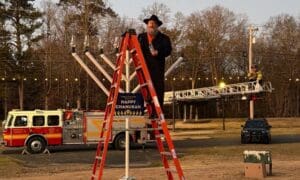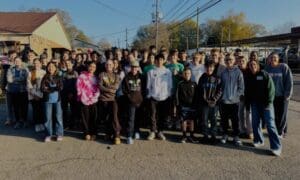Two significant and historic events occurred on Jan. 20, 2017. You probably watched the much more publicized one, that of the Inauguration of President Trump. And, by the way, let’s pray right here and right now that God will lead and guide President Trump and all our elected officials to work for us so that we keep our nation a place where we can freely live out our faith both in our churches and also especially in the public arena without threats and reprisals. Amen.
The second historic event of Jan. 20, 2017, took place at St. Philip Benizi Roman Catholic Church in Jonesboro. Let me tell you about it and comment on its historic nature.
Early in November I received an email, the content of which was an invitation from Friar Santo to come and preach in a joint worship service of Catholics and Lutherans. That was a bit surprising by itself, but it became even more surprising when the stated purpose of the service would be “to honor the 500th Anniversary of Martin Luther’s 95 Theses.”
To be openly honest, I was at first shocked, and then even had thoughts that one of my pastor friends was “pulling my leg.” Could this really be true?
Let me give you a little more background in case you’re not quite sure what makes this so historic. Indeed, it was 500 years ago on Oct. 31, 1517, that Martin Luther, a Roman Catholic priest and professor, went to his local church in Wittenburg, Germany, and nailed his “95 Theses” (“Sentences”) to the door. At the time the only Christian church body in all of Western Europe was the Catholic Church, with the only other church body being the Eastern Orthodox Church, in places such as Turkey, Greece, and Russia, which had broken from the Roman Church in 1054.
The Roman Church was very powerful in matters of both church and politics. In 1517 the Pope and the Roman Church were engaged in selling “indulgences,” pieces of paper sold for money with the promise of taking years off in purgatory. The main topic of Martin Luther’s 95 Theses was questioning and protesting this practice. When he nailed them to the church door, they not only were read by those coming to worship the next day, but they also “went viral” as they were mass produced by Gutenberg’s new invention of the printing press.
At that time Luther only saw himself as a devout Catholic, who simply wished to ask for a small change within the church with the end of the sale of these indulgences. His intent was not to break away from the Catholic Church, nor to start a new church, nor certainly to have a new church named after him.
However, Luther continued in his convictions and the Roman Church continued in its convictions, and Martin Luther was officially excommunicated on Jan. 3, 1521.
Since then, followers of Luther became known as “Lutherans,” not to Martin Luther’s liking, and most all other subsequent church bodies and denominations have some connection back to this break with Rome. Those most closely associated with Luther’s influence are also called “Protestants” because of their “protest” against the Roman Church.
For 500 years there have been continued differences between Lutherans and Catholics, but there have also been several significant moves of agreement between the two church bodies, some in very recent times.
Just this past Oct. 31, 2016, the Lutheran World Federation and the Roman Catholic Church jointly held an ecumenical commemoration of The Reformation in Lund, Sweden. Pope Frances participated as did representatives from the Lutheran Church.
Now, back to Friar Santos’ invitation to me and our Prince of Peace Lutheran Church. With knowledge of the joint service in Sweden, Friar Santos and the staff at St. Philip Benizi decided this should be done locally as well, with the generous understanding that we Lutherans and Catholics still have a lot to celebrate in common, namely Jesus Christ, and that from Martin Luther and The Reformation both the Roman Catholic Church and the Lutheran Church improved their practices and were made better and stronger as a result.
Of course, we Lutherans have been proud of our heritage, but to see and experience the Roman Catholic Church acknowledging the good of our heritage was a blessing and even humbling experience. Of course, we Lutherans and the Catholics do not intend to “merge,” but it appears that we can celebrate our unity in Christ, live together in His Love, and work together for the salvation and betterment of the world.
And the service that night? It was amazing and outstanding. Beginning with a sweet spirit brought by all who attended, the worship unfolded with grace and power, yet with a peaceful and calming atmosphere hovering throughout the beautiful sanctuary.
For my sermon, I took us back to Jan. 2, 1521, the day before Martin Luther was excommunicated, and tried to bring the message “the good Catholic Brother Martin” would have given. I’ll share that with you next month.
Find Kollmeyer at www.princeofpeacefayette.org












Leave a Comment
You must be logged in to post a comment.